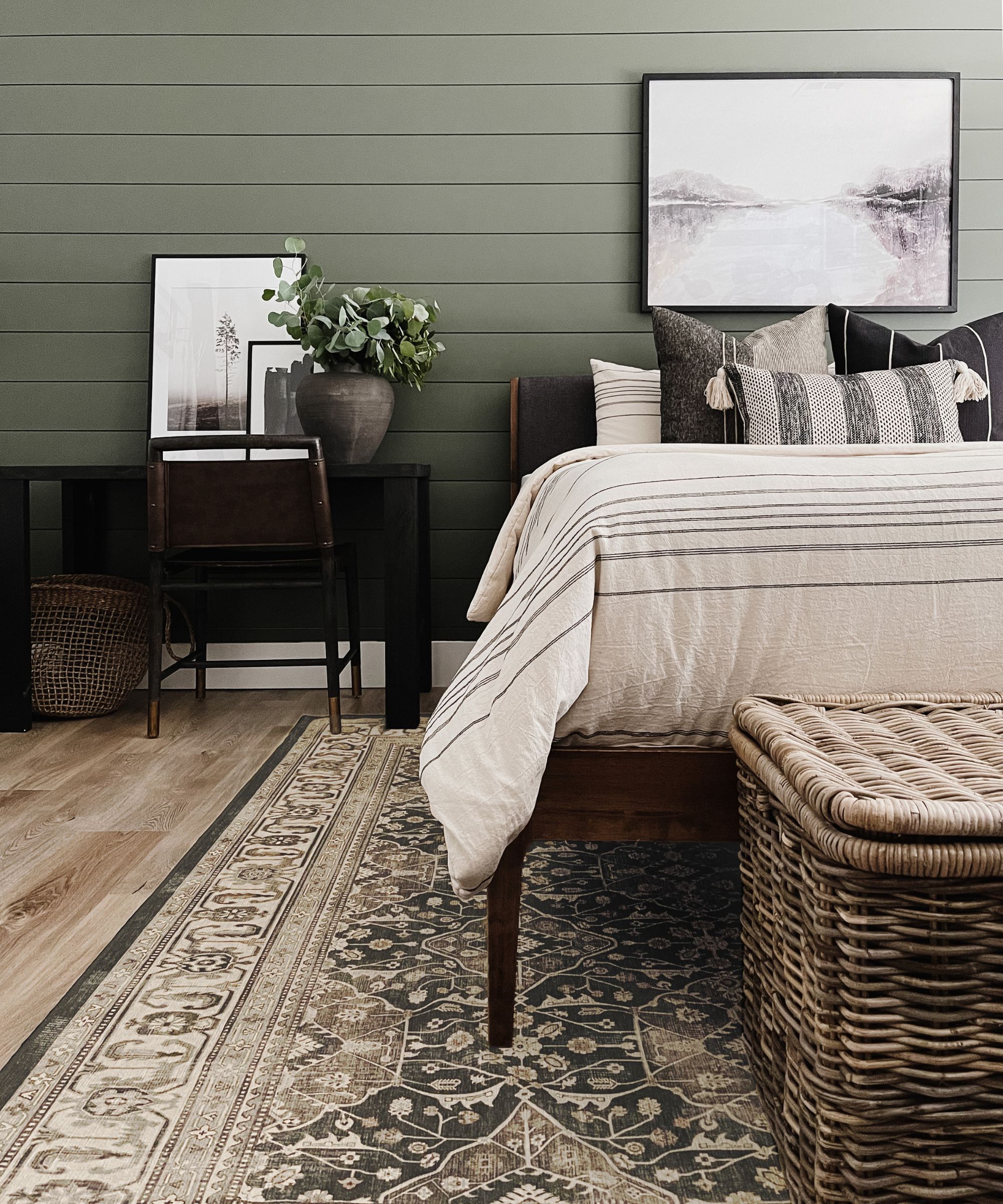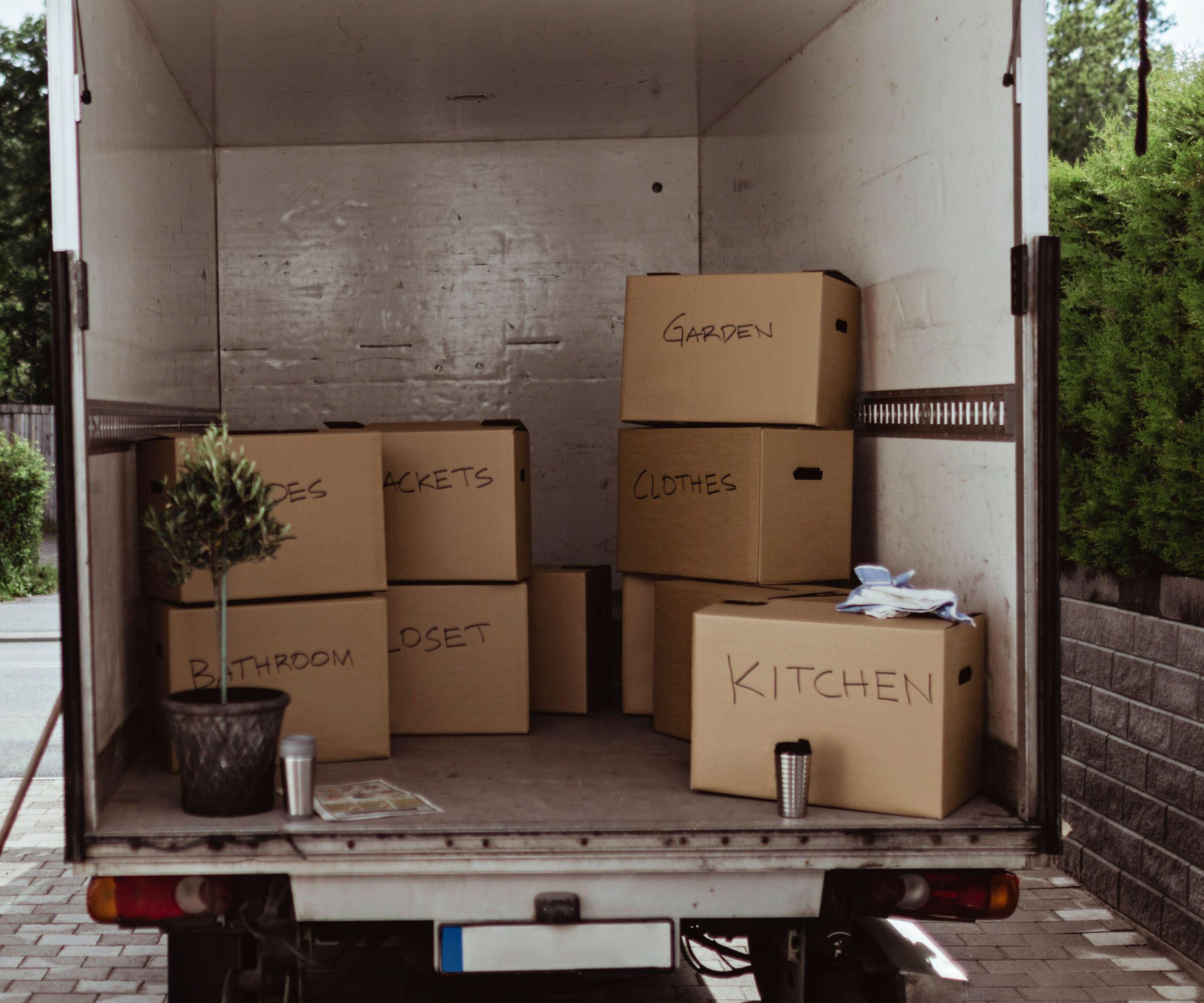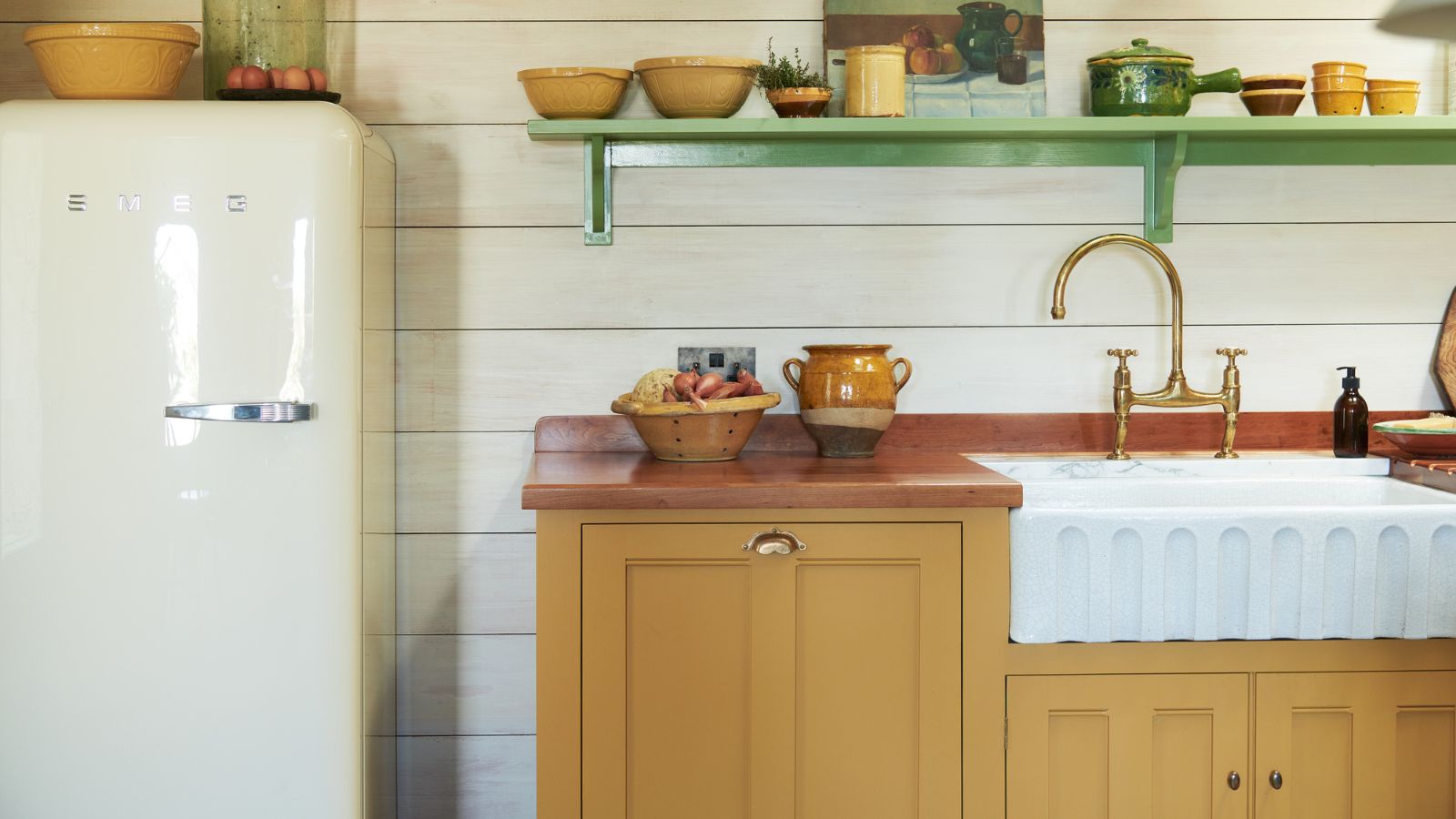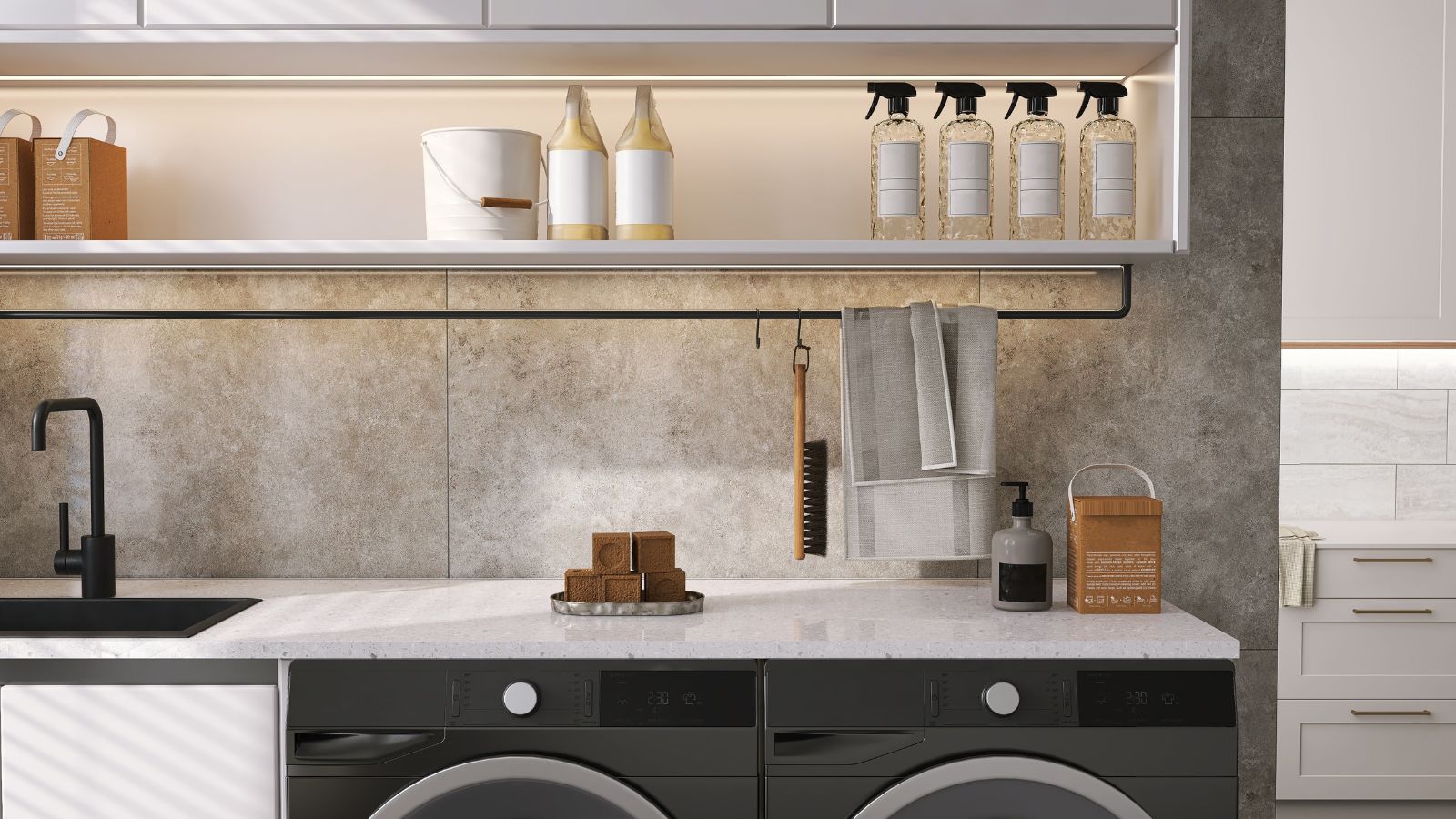How to move a mattress by yourself – pro tips for an injury-free job well done
Removal experts share how to get the job done without ending up in the ER


Whether you're moving house or simply rearranging your space, there is one extremely cumbersome item that is tricky to shift by yourself – your mattress.
While it's not recommended to tackle maneuvering your mattress alone, given its weight and size, sometimes it's unavoidable. But, with a heightened risk of injury, it's important to take precautions to protect your health, and the integrity of your mattress.
I spoke to removal experts and professional movers for their top tips for moving your mattress alone.
How to move a mattress by yourself
1. Plan your route

Before you start, you need to measure your mattress and check it will fit through your doorways and corridors.
Andre Kazimierski, CEO of Improovy says, 'Mattresses can be unexpectedly heavy, and they're also super unwieldy. So, it's important to figure out your route ahead of time, including measuring doorways to make sure the mattress will successfully fit.'
Use a strong measuring tape, such as the Hyper Tough 25-Foot Tape Measure available at Walmart, which features a durable blade lock for accurate measuring. If you're unsure how to read a tape measure, we have a dedicated guide.
2. Check if your mattress is foldable

Before you begin trying to move it, check whether your mattress is foldable, especially if you live in a rented property where damaging the walls could cost you some or all of your security deposit.
Usually, mattresses with inner springs cannot be folded, however, it is worth checking with the brand to help you avoid injury.
Matt Graber, co-owner of Cool Hand Movers in New York City says, 'Even if it doesn’t appear to have springs or hard structural material inside, double-check on the manufacturer's website. If you can fold it, as is the case with a lot of foam mattresses, it will be much easier to handle, especially on staircases or in tight hallways,' Graber adds.
3. Prepare your mattress

Whether folded or flat, it's time to prepare your mattress for moving. Ashlyn Cook, community outreach manager at UniMovers says, 'Cover the mattress with a protective cover to keep it clean and prevent damage during the move. You can find mattress covers at furniture stores or online retailers.'
We recommend the Nordic Elk Mattress Bags for Moving and Storage, available at Amazon, as they're made of a strong, thick tarp material with handles for grip, and zips for ease of use.
If using a bag or wrap, Nick Valentino, vice president of market operations of Bellhop adds, 'If the mattress has handles; make sure those stay accessible.' This will make the moving process itself a lot easier.
While we recommend using a specified mattress wrap or bag, if you're in a pinch, use two fitted bed sheets, one on each side so they overlap, or a duvet case to slip your mattress into and button or zip up for protection from grime during the move.
This will protect any dust, dirt or debris from gathering on your mattress, which might leave you needing to steam clean it. If you're just moving the mattress to clean it, you can skip this step.
4. Clear a path

With the mattress wrapped and ready, clear your pathway before the heavy lifting begins.
Nick Valentino, moving expert, says, 'Wherever you're planning to move your mattress to, make sure there are no obstacles in the way. Furniture, rugs, and runners can all become problematic here,' especially if you have a small bedroom.
Moving these might seem like extra effort, but anything that mitigates the risk of falls or trips is worth it in the end.
5. Attach straps

Attaching straps is the best way to avoid injury when moving a mattress alone. They can also help to cut house moving costs by saving on calling the pros.
Ashlyn Cook of Unimovers suggests, 'Place them under the mattress and loop them around your shoulders or forearms.'
These Mattress Packing Straps for Moving or Storage available at Amazon come highly rated by shoppers, and they can be used for both rolling and carrying your mattress.
6. Use a dolly
If you have access to one, using a dolly is a great way to move heavy furniture by yourself.
Getting a firm grip on the straps, Carl Fanaro, CEO at NOLA Buys Houses recommends, 'lifting with your legs, not your back. I learned this lesson the hard way after getting a lower back injury.'
Place the mattress on the dolly and secure it tightly with the straps, ensuring that it does not shift or move when you push the dolly. The last thing you want is for the mattress to fall off, or on top of you, during the moving process.
'If you don't have access to a dolly, slide the mattress along the floor as much as possible,' advises Nick Valentino, expert mover. Alternatively, Ashlyn Cook of UniMovers says, 'You can also rent a dolly from stores such as Home Depot for as little as $14 for four hours,' says Cook.
If you need to take your mattress downstairs, you can try sliding it but it's better, and safer, to hire a handyman.

This foldable dolly is a great investment for your home and can hold up to 660 lbs. Whether you are moving a mattress, rearranging your furniture, or upgrading your yard, having this to hand will help reduce your physical workload.
How to avoid injury

When moving a mattress on your own, staying safe should be your top priority urges Ashlyn Cook of UniMovers. She says, 'Never rush. Take your time when moving the mattress to avoid dangerous accidents. You should also wear shoes with good grip and support can prevent slips and falls.'
Liz Hutz, CEO at LizBuysHouses adds, 'Getting your mattress onto the removals vehicle is the tricky part. If you have a ramp, use it to roll the dolly right into the truck. If not, remember to lift with your knees, not your back, and don’t be afraid to ask a neighbor for help to avoid injury.
'Moving is a leading cause of back injuries and one wrong moment can lead to months of physical therapy.'
If calling on a friend, colleague or family member isn't possible when moving your mattress, remember to take your time, plan your route, clear the path and make use of covers with handles, a dolly, or straps to complete the job without hurting yourself. Taking breaks is fine too and will very likely be needed.
After you're done moving, if you spot some dirt or marks on your mattress, you can clean your mattress in a few simple steps.
Sign up to the Homes & Gardens newsletter
Design expertise in your inbox – from inspiring decorating ideas and beautiful celebrity homes to practical gardening advice and shopping round-ups.

Ottilie joined Homes & Gardens last year, after finishing a Master's in Magazine Journalism at City, University of London. With previous contributions in Livingetc and Motorsport Magazine, she produces content for the Solved section on the website, focusing on clever tips and tricks to keep your home beautiful, organized and clean. She also has an undergraduate degree in English Literature and History of Art from the University of Edinburgh, where she developed a love for inspiring interiors and architecture.
-
 The biggest curtain trends to follow in 2025 – 8 key looks to shop that will instantly elevate your rooms
The biggest curtain trends to follow in 2025 – 8 key looks to shop that will instantly elevate your roomsThese are the colors, styles, and materials to embrace in your windows this year if you want desirable drapes, plus our favorite places to shop the trends
By Lilith Hudson
-
 Reese Witherspoon upgraded a small corner into a cozy reading nook – designers say you can replicate her 'ultimate little escape' (from $18)
Reese Witherspoon upgraded a small corner into a cozy reading nook – designers say you can replicate her 'ultimate little escape' (from $18)'It’s all about comfort, calm, and just the right amount of cozy': You only need three things to follow Reese's example – and it's not only for book lovers
By Megan Slack
-
 The 5 worst things you can do to your fridge – these will drive up energy costs and result in pricey and regrettable repairs
The 5 worst things you can do to your fridge – these will drive up energy costs and result in pricey and regrettable repairsIt's crucial to swerve these blunders, appliance experts warn
By Ottilie Blackhall
-
 Extend the lifespan of your appliance with 5 simple but crucial washing machine maintenance tips
Extend the lifespan of your appliance with 5 simple but crucial washing machine maintenance tipsFrom cleaning the filters to keeping the door open, experts reveal the washer tips they swear by
By Andy van Terheyden
-
 5 vital ways a home battery backup can help with your most urgent needs in a power outage – from heating to flood prevention and calls
5 vital ways a home battery backup can help with your most urgent needs in a power outage – from heating to flood prevention and callsExperts say they're a worthy investment
By Clement Feng
-
 I’m an HVAC technician, and this is when I turn on my AC each year – plus 5 checks I always do beforehand
I’m an HVAC technician, and this is when I turn on my AC each year – plus 5 checks I always do beforehandSave yourself an AC hassle by running my checks and turning it on before big heat hits
By Josh Mitchell
-
 6 things you should never throw in the trash – and what to do for safe disposal instead
6 things you should never throw in the trash – and what to do for safe disposal insteadFrom batteries to space heaters, experts reveal what not to throw
By Andy van Terheyden
-
 7 spring home maintenance mistakes to never make – overlooking these now can lead to pest problems and structural damage
7 spring home maintenance mistakes to never make – overlooking these now can lead to pest problems and structural damageHome improvement pros share common mistakes and what to do instead
By Eve Smallman
-
 10 common but little-known HOA fines to watch out for – and how to avoid them
10 common but little-known HOA fines to watch out for – and how to avoid themFrom sprinklers to garage doors and external pipes, your HOA contract may leave you open to a fine
By Eve Smallman
-
 I’m a homes editor and these are the 4 vital storage items I’m 'adding to cart' this spring – and why you should too
I’m a homes editor and these are the 4 vital storage items I’m 'adding to cart' this spring – and why you should tooI've learned a few hard lessons in recent weeks and these storage solutions will help
By Punteha van Terheyden